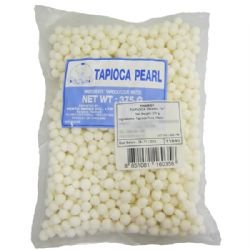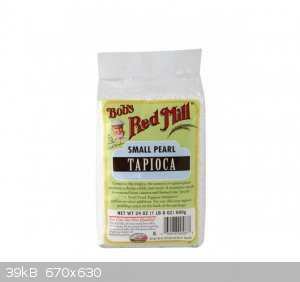Hermes_Trismegistus
National Hazard
   
Posts: 602
Registered: 27-11-2003
Location: Greece, Ancient
Member Is Offline
Mood: conformation:ga
|
|
anhydrous ethanol, etoh, anhydrous alchohol, calcium oxide, quicklime, methanol?
It may not be possible for me to obtain anhydrous alchohol/s OTC.
I have read that they can be prepared quite easily by running a stream of alchohol over thin slices of sodium metal, seems like a wonderful
process.....except I may not be able to purchase Na metal. I have read of another simple process, distilling EtOH (ethanol) over Calcium
Oxide(quicklime). I don't know of anyone who carries this substance OTC, it is very caustic and produces large amounts of heat on slaking with
water.
I do however, feel that the production of Calcium Oxide from Calcium Carbonate is well within the abilities of Joe Everyman. It might present some
difficulty in the Lab setting because of the high temperatures involved, but off of the benchtop, the required heat is well within the means of anyone
with a backyard.
To produce quicklime from chalk (CaCO2---> CaO + CO2) you must bake the chalk at above 825 degrees Celcius. Not a temperature to be easily reached
and sustained by the burning of propane or natural gas. However, this is a comparatively low temperature for one commonly overlooked and underespected
fuel. Charcoal. With charcoal and a blower, you can easily and quickly reach a couple thousand degrees.
Making the "kiln" would be easy to any backyard barbeque'er but I'll elaborate for the uninitiated. You'd want to place a
cast iron pipe in the flue of a charcoal furnace, because placing the "retort", directly in the coals would create hot spots that could
easily melt the pipe.
To make the furnace, I will place an incomplete circle of cinder blocks on a flat dry surface (not dirt, the evaporated water cools the inside of
the kiln) lay a piece of pig wire (very thick wire mesh) over the first layer of blocks so that you have a grate to hold the charcoals. Leave a space
in the bottom row to receive the blower nozzle, and then continue the next circle of cinder blocks one on top of the other in a stack until you have a
tower of cinder blocks at least four tiers high, place a layer of coarse granite gravel on the pig wire mesh (to protect the mesh from the intense
heat of the burning charcoal) However the pores between the gravel must be large enough to allow a great deal of air to flow between the stones, it
would also be wise to leave the largest concentration of stones on the outer rim. That will allow the flow of air to direct itself most intensely to
the center of the burn (but let's not split hairs).
Then "charge" the furnace with a hell of a lot more charcoal than you think you need. Place another layer of pigwire mesh just above the
coals (because you, as an amateur will blow way too much air into the furnace before the fire can handle it and you don't want flaming peices of
charcoal all over the neighborhood)
Layer as many more layers of cinder blocks onto the stack as you can without making it too tall to handle, suspend your chalk charged vessel in the
flue and wait until the obvious evolution of Carbon Dioxide gas ..........I'll finish this later.......gotta go right now.
Arguing on the internet is like running in the special olympics; even if you win: you\'re still retarded.
|
|
|
Polverone
Now celebrating 21 years of madness
        
Posts: 3186
Registered: 19-5-2002
Location: The Sunny Pacific Northwest
Member Is Offline
Mood: Waiting for spring
|
|
I've done this before, using a charcoal (wood) fire and chunks of marble. The process takes a while, and the evolution of CO2 is not obvious. The
chemical transformation is profound, though.
Simpler would be a preliminary distillation from anhydrous MgSO4 or another similar drying agent, then addition of magnesium metal, reflux, and a
second distillation for very dry alcohol (magnesium alkoxide forms and reacts with remaining water). Amalgamated aluminum might substitute for the
magnesium.
On the other hand, calcium oxide has multiple uses and large-scale, high-temperature chemistry is fun.
|
|
|
ech310n
Harmless

Posts: 29
Registered: 18-10-2003
Location: Australia
Member Is Offline
Mood: No Mood
|
|
Darn it, as I was posting this I realised Polverone just did 
MgSO4 can be made anhydrous by heating it in a suitable oven at temperatures over 200*C for 30 minutes or more.
|
|
|
Mumbles
Hazard to Others
  
Posts: 436
Registered: 12-3-2003
Location: US
Member Is Offline
Mood: Procrastinating
|
|
http://chemdat.merck.de/cdrl/services/labtools/en/table_orgs...
This page may help in the drying of ethanol, in addition to many other compounds.
|
|
|
ech310n
Harmless

Posts: 29
Registered: 18-10-2003
Location: Australia
Member Is Offline
Mood: No Mood
|
|
I just remembered the tables at Rhodium:
Drying Agent Selection Guide
Drying Agent Data
Them two tables have been invaluable to me and strangely enough haven't been mentioned in this topic yet.
|
|
|
Organikum
resurrected
    
Posts: 2337
Registered: 12-10-2002
Location: Europe
Member Is Offline
Mood: frustrated
|
|
to honour my title:
drying EtOH not making CaO is called for?
- industrial ways.
azeotropic destillation using benzene which forms an ternary azeotrope with the water and the EtOH.
Buhuuuu .... I have no benzene? Toluene works also - not so time effective but works.
Salting out. With or without distillation. Often adding salt makes the alcohol and water separate by themselfes - IPA for example with NaCl. Try
different salts and add distillation - works nearly always. The changing of the properties of azeotropes by salts is the common industrial method of
choice - fast, easy, cheap and endless scaleable in continous processes.
But for the utmost overdry alcohol you MUST use an (explosionproof) hairdryer. Bonedry. Promised.
|
|
|
Organikum
resurrected
    
Posts: 2337
Registered: 12-10-2002
Location: Europe
Member Is Offline
Mood: frustrated
|
|
addon
CuSO4 is very usable for EtOH. Just change the CuSO4 several times and shake shake shake in between. Or stirr. The process of uptake of water by
drying agents takes it time. Most ppl are just not patient enough.
You may also look for somebody with incontinenzia. Give this person the bottle with solvent to dry and wait. As such a person cannot hold the water
for a long time he will loose it and the alcohol will be left waterless. (thats a new concept I admit, but a interesting approach I want to say...)
|
|
|
vulture
Forum Gatekeeper
    
Posts: 3330
Registered: 25-5-2002
Location: France
Member Is Offline
Mood: No Mood
|
|
Drying ethanol with Na will not work as it reacts with Na to form sodiumethoxide.
This is actually a safe way to destroy sodium waste in the lab.
One shouldn't accept or resort to the mutilation of science to appease the mentally impaired.
|
|
|
Mumbles
Hazard to Others
  
Posts: 436
Registered: 12-3-2003
Location: US
Member Is Offline
Mood: Procrastinating
|
|
Would not the Sodium Ethoxide then react with the water? The reaction would then form more ethanol and Sodium Hydroxide. I suppose the Ethanol, and
sodium Ethoxide would exist at equilibrium though as the reaction of NaOH and Ethanol also forms the ethoxide, but water too.
|
|
|
vulture
Forum Gatekeeper
    
Posts: 3330
Registered: 25-5-2002
Location: France
Member Is Offline
Mood: No Mood
|
|
IIRC,
NaOH + C2H5OH <---> C2H5ONa + H2O
is situated to the left. It certainly is for sodium methoxide.
One shouldn't accept or resort to the mutilation of science to appease the mentally impaired.
|
|
|
mattman1978
Harmless

Posts: 2
Registered: 8-8-2005
Member Is Offline
Mood: No Mood
|
|
Obtaining Dry IPA
I saw a post similar to this and I thought I would respond. Partly to help others, partly to get some advice. In industry, we avoid the use of Benzene
when doing ANYTHING. Health effects are BAD. Instead, we use heptane as an azetroping agent in the azetropic distillation of IPA and water. Is a Very
simple distillation. Simply distill to a splitter, remove the bottom layer (heavy phase) and reflux the top layer to a packed column.
You WILL eventually get a dry mixture of IPA and heptane in the bottom. And it will go to 0.01 % moisture or better! Problem is, in the plant, this
is EXTREMELY wasteful with respect to the afor mentioned bottom layer. The stinking layer has a LOT of IPA and some Heptane. (IPA actually works
pretty well to dissolve heptane into water). Oh and we are useing the cheap heptane, mixture of isomers. Cyclohexane also works well. Anyhow, does
anyone else have any good ideas for azetroping agents? They must be generally non reactive and must boil up with the IPA/water mixture.
Oh and once you are done getting it dry, you can SLOWLY take off the heptane or cyclohexane off the top of the column. You should still try to send
about 90% of what is boiled up back down the column while slowly removing the heptane in order to provide purer heptane and avoid wasting a lot of
IPA.
This does work for IPA, NPA, and Butanol. May work for Ethanol, but I've never tried it. I believe hexane is used for ethanol.
I have used the sodium method in lab to dry non acohols, but it can be a little dangerous. Also, I know alcohols will react with the sodium metal, we
used those to slowly "kill" the sodium. Maybe it was the moisture in the alcohols, not sure. I just know we used IPA to knock out the
worst of the sodium and then we used ethanol to finish it off.
Anyhow, any suggestions or any questions, just drop me a line.
Matt
|
|
|
The WiZard is In
International Hazard
    
Posts: 1617
Registered: 3-4-2010
Member Is Offline
Mood: No Mood
|
|
Your answer can be found in ...
Braurer. Le book is in the forums library.
|
|
|
Db33
Hazard to Others
  
Posts: 206
Registered: 25-11-2016
Member Is Offline
Mood: No Mood
|
|
i saw a video on youtube and the guy made anhydrous ethanol from 95% by using 3A molecular sieves. Why is that not an option? or is it?
|
|
|
Dr.Bob
International Hazard
    
Posts: 2733
Registered: 26-1-2011
Location: USA - NC
Member Is Offline
Mood: No Mood
|
|
3A mole sieves work fine, but it takes a lot of sieves, and you lose some ethanol to the sieves as well. For small amounts, they work great, or if
you have a huge column and can regenerate the sieves, it is great also. That is how industrial ethanol is dried, they have several multistory sieve
columns, they dry ethanol in a few in series, then switch to another set of columns and then steam heat the first ones to regenerate them, likely
having to trap the ethanol and water they release in a cold trap to recycle back into the system, to prevent too much ethanol from going into the air,
as it can contribute to smog in large amounts via acetaldehyde formation.
|
|
|
Db33
Hazard to Others
  
Posts: 206
Registered: 25-11-2016
Member Is Offline
Mood: No Mood
|
|
for regeneration i always thought sieves could just be baked like epsom salts, but you mean they need a column?
|
|
|
Tsjerk
International Hazard
    
Posts: 3032
Registered: 20-4-2005
Location: Netherlands
Member Is Offline
Mood: Mood
|
|
Baking is fine, Dr. Bob is talking about industrial setups (where they in principal are also baking).
|
|
|
zed
International Hazard
    
Posts: 2283
Registered: 6-9-2008
Location: Great State of Jefferson, City of Portland
Member Is Offline
Mood: Semi-repentant Sith Lord
|
|
Ummm. I always imagined that CaO was an easy get. The older literature relies upon it's drying properties often. Apparently, it is not as
commonplace as it once was.
Other than chemical suppliers, I have been coming up empty.
Not cheap on ebay. And, such a material, kinda need to be cheap!
http://www.ebay.com/sch/i.html?_from=R40&_trksid=p205060...
[Edited on 13-12-2016 by zed]
[Edited on 13-12-2016 by zed]
|
|
|
PirateDocBrown
National Hazard
   
Posts: 570
Registered: 27-11-2016
Location: Minnesota
Member Is Offline
Mood: No Mood
|
|
I was astonished about the low availability of tech grade CaO, as well.
In both academic and corporate labs, in my experience, it's seen as a dirt cheap and common chemical.
I even remember a bottle of it in my childhood chemistry sets!
I would be thinking that any brickmason ought to have access to it, in 50 pound bags. But checking places like Home Depot has come up dry.
[Edited on 12/13/16 by PirateDocBrown]
|
|
|
PeterC
Harmless

Posts: 23
Registered: 11-12-2016
Member Is Offline
Mood: No Mood
|
|
CaO is one of those enigmatic reagents that somehow ends up being very expensive even when looking at cheap suppliers. Acros sells 1kg for 19 euro
(actually decent compared to other prices I found in the EU)
|
|
|
beerwiz
Hazard to Others
  
Posts: 128
Registered: 6-2-2014
Member Is Offline
Mood: No Mood
|
|
The best OTC way to dry ethanol or methanol is using tapioca pearls. They look like molecular sieves and will absorb all of the water in less than 6
hours; 100g of tapioca pearls will adsorb 25ml+ of water, and you've got nearly 100% pure alcohol after filtering. You can buy them from most Asian or
Chinese supermarkets. Corn grits are also effectve but will adsorb 19ml water for every 100g of corn grits. Equally effective are corn starch and
tapioca flour, they are more common and can be found in almost any health food store and most supermarkets.
CaO is next to impossible to find OTC other than doing a special order and it's not cheap, if you are lucky you may find it at a building materials
supply place but there's a slim chance.
[Edited on 15-12-2016 by beerwiz]

[Edited on 15-12-2016 by beerwiz]

[Edited on 15-12-2016 by beerwiz]

[Edited on 15-12-2016 by beerwiz]
|
|
|
wg48
National Hazard
   
Posts: 821
Registered: 21-11-2015
Member Is Offline
Mood: No Mood
|
|
Quote: Originally posted by beerwiz  | The best OTC way to dry ethanol or methanol is using tapioca pearls. They look like molecular sieves and will absorb all of the water in less than 6
hours; 100g of tapioca pearls will adsorb 25ml+ of water, and you've got nearly 100% pure alcohol after filtering.
[Edited on 15-12-2016 by beerwiz] |
Wow +25ml per 100g would be good almost as good as CaO but it does depend on what nearly 100% alcohol means.
The only reference I could find for its effeciency was 11% w/w with hot wet alcohol vapor (80/20% alcohol/water). That would be a lot less with 99%
alcohol, probably less than 1%.
https://www.researchgate.net/publication/271970826_Desiccant...
|
|
|